Podcasts

ModPath Chat is the official podcast of Modern Pathology, a journal of the US and Canadian Academy of Pathology (USCAP) . ModPath Chat features interviews with authors, opinion leaders and experts on the latest science, technology, and developments in the field of pathology. The monthly podcast series is hosted by Dr. George J. Netto, the Editor-in-Chief of Modern Pathology and the Chair of Pathology at the University of Alabama at Birmingham.
Tune in here: Spotify | Acast | iTunes | Soundcloud | Google Podcasts | RSS Feed
You can read all the papers featured in ModPath Chat in our dedicated Papers from the Podcast collection.
Morphologic Feature Guiding Discovery of Driver Genetic Alteration in Rare Entity
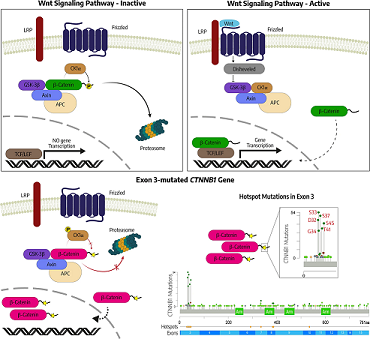 Adenoid Ameloblastoma is a very rare benign odontogenic tumor characterized microscopically by epithelium resembling conventional ameloblastoma, with additional duct-like structures, epithelial whorls, and cribriform architecture. Dentinoid deposits, clusters of clear cells, and ghost-cell keratinization may also be present.These tumors do not harbor BRAF or KRAS mutations and their molecular basis appears distinct from conventional ameloblastoma but remains unknown. Dr. Carolina Cavalieri Gomes from the Universidade Federal de Minas Gerais in Brazil, discusses her team’s discovery of CTNNB1 (beta-catenin) exon 3 mutations in 4 of 9 primary cases and 2 additional recurrences.
Adenoid Ameloblastoma is a very rare benign odontogenic tumor characterized microscopically by epithelium resembling conventional ameloblastoma, with additional duct-like structures, epithelial whorls, and cribriform architecture. Dentinoid deposits, clusters of clear cells, and ghost-cell keratinization may also be present.These tumors do not harbor BRAF or KRAS mutations and their molecular basis appears distinct from conventional ameloblastoma but remains unknown. Dr. Carolina Cavalieri Gomes from the Universidade Federal de Minas Gerais in Brazil, discusses her team’s discovery of CTNNB1 (beta-catenin) exon 3 mutations in 4 of 9 primary cases and 2 additional recurrences.
While the occasional presence of ghost cells keratinization was the feature that led the team to initially investigate beta-catinin, this feature was present in only 2/6. Furthermore, nuclear beta-catenin immunoexpression (IHC) was found in 7 of 8 tested samples including some with wild type CTNNB1. The findings support the classification of adenoid ameloblastoma as a separate entity, and not as a subtype of ameloblastoma. The use of beta-catenin IHC could help in establishing the diagnosis in challenging cases.
Listen via Acast | Spotify | or Download
Associated Article: Adenoid ameloblastoma harbors beta-catenin mutations
Risk Stratification for SLNB in Melanoma
 Although prophylactic lymph node dissections do not improve survival, the prognostic implications of a positive sentinel node and the benefi ts of removing nodal metastases for loco-regional disease control remain important. There is a strong interest in novel approaches that can improve patients’ selection for sentinel lymphnode biopsies (SLNB) given that 85% of these procedures are negative and non-therapeutic. The host discusses with Dr. Alexander Meves his recent review in Modern Pathology on the role of gene expression profiling in this setting when combined with clinicopathologic parameters.
Although prophylactic lymph node dissections do not improve survival, the prognostic implications of a positive sentinel node and the benefi ts of removing nodal metastases for loco-regional disease control remain important. There is a strong interest in novel approaches that can improve patients’ selection for sentinel lymphnode biopsies (SLNB) given that 85% of these procedures are negative and non-therapeutic. The host discusses with Dr. Alexander Meves his recent review in Modern Pathology on the role of gene expression profiling in this setting when combined with clinicopathologic parameters.
Listen via Acast | Spotify | or Download
Associated Articles: Breslow thickness 2.0: Why gene expression profiling is a step toward better patient selection for sentinel lymph node biopsies
Flat urothelial lesions of the urinary bladder: Who is in who is out?
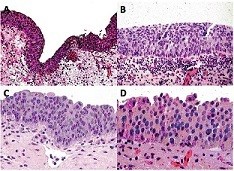 Flat lesions of the urothelium with histologic features that falls short of the threshold for urothelial carcinoma in situ (CIS) remains a challenging problem in diagnostic surgical pathology. Among these are flat urothelial hyperplasia, urothelial dysplasia, and atypia of unknown significance; lesions that have struggled under evolving classifications, changing criteria, and limited clinical actionability, all confounded by the recognized lack of diagnostic reproducibility.
Flat lesions of the urothelium with histologic features that falls short of the threshold for urothelial carcinoma in situ (CIS) remains a challenging problem in diagnostic surgical pathology. Among these are flat urothelial hyperplasia, urothelial dysplasia, and atypia of unknown significance; lesions that have struggled under evolving classifications, changing criteria, and limited clinical actionability, all confounded by the recognized lack of diagnostic reproducibility.
In this episode of ModPath Chat, Dr. Gladell Paner discusses with the host his recently published “Controversies in Pathology” article in Modern Pathology on the pros and cons of keeping the previous terminology of this group of lesions.
Listen via Acast | Spotify | or Download
Radio-Resistant Prostate Carcinoma: “Cribriform” morphologies and DNA Damage Response and Repair defects
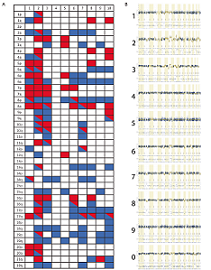 Locally recurrent prostate cancer from 53 patients that failed radiation therapy and underwent salvage radical prostatectomy was analyzed for clinicopathological and genomic characteristics. Most radiorecurrent tumors were enriched in cribriform morphologies (invasive cribrifom PCa and intraductal carcinoma with cribriform pattern) and demonstrated potentially targetable genomic alterations (defects in DDR genes: TP53, BRCA2, PALB2, ATR etc.). The guest, Dr. Rajal Shah of UTSW, discusses how understanding this phenotypic and genotypic diversity of radiorecurrent PCa is critically important for future management of such patients.
Locally recurrent prostate cancer from 53 patients that failed radiation therapy and underwent salvage radical prostatectomy was analyzed for clinicopathological and genomic characteristics. Most radiorecurrent tumors were enriched in cribriform morphologies (invasive cribrifom PCa and intraductal carcinoma with cribriform pattern) and demonstrated potentially targetable genomic alterations (defects in DDR genes: TP53, BRCA2, PALB2, ATR etc.). The guest, Dr. Rajal Shah of UTSW, discusses how understanding this phenotypic and genotypic diversity of radiorecurrent PCa is critically important for future management of such patients.
Listen via Acast | Spotify | or Download
Associated Article: Enrichment of “Cribriform” morphologies (intraductal and cribriform adenocarcinoma) and genomic alterations in radiorecurrent prostate cancer
The Stanford Experience in Implementation of the Molecular Classification of Endometrial carcinomas (EC)
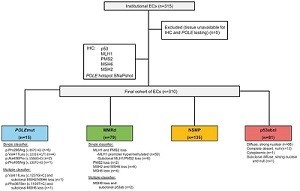 Establishing an efficient and standardized workflow for performing molecular classification on ECs, and reporting both the molecular and histologic findings in an integrative manner, is imperative. Dr. Brooke Howitt discusses with the host her institution’s effort to implement rapid and routine molecular classification on all ECs diagnosed at Stanford.
Establishing an efficient and standardized workflow for performing molecular classification on ECs, and reporting both the molecular and histologic findings in an integrative manner, is imperative. Dr. Brooke Howitt discusses with the host her institution’s effort to implement rapid and routine molecular classification on all ECs diagnosed at Stanford.
Listen via Acast | Spotify | or Download
Associated Article: Prospective molecular classification of endometrial carcinomas: institutional implementation, practice, and clinical experience
Expanding the clinico-pathological spectrum of SDH Deficient RCC
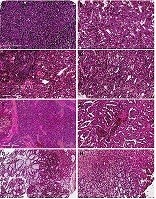 Most succinate dehydrogenase (SDH)-deficient RCCs demonstrate classic morphology characterized by bland eosinophilic cells with intracytoplasmic inclusions. Increasingly, “variant” morphologic features are recognized. Drs. Anthony Gill and Talia Fuchs discuss with the host their findings in a recent publication in Modern pathology where features such as high-grade nuclear features, necrosis, papillary, solid, and tubular architecture are present. These features appear to be associated with more aggressive behavior emphasizing the need for a low threshold for performing SDHB immunohistochemistry in any difficult to classify renal tumor; particularly if occurring at a younger age.
Most succinate dehydrogenase (SDH)-deficient RCCs demonstrate classic morphology characterized by bland eosinophilic cells with intracytoplasmic inclusions. Increasingly, “variant” morphologic features are recognized. Drs. Anthony Gill and Talia Fuchs discuss with the host their findings in a recent publication in Modern pathology where features such as high-grade nuclear features, necrosis, papillary, solid, and tubular architecture are present. These features appear to be associated with more aggressive behavior emphasizing the need for a low threshold for performing SDHB immunohistochemistry in any difficult to classify renal tumor; particularly if occurring at a younger age.
Listen via Acast | Spotify | or Download
Associated Article: Expanding the clinicopathological spectrum of succinate dehydrogenase-deficient renal cell carcinoma with a focus on variant morphologies: a study of 62 new tumors in 59 patients
High Risk and Selected Benign Breast Lesions on Core Biopsy: Excision Vs Surveillance?
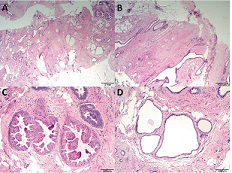 The vast majority of image-detected breast abnormalities are currently diagnosed by percutaneous core needle biopsy (CNB). While management of frankly malignant lesions diagnosed by CNB is now well-defined, there is less consensus on the optimal management of high-risk and selected benign lesions diagnosed by CNB. In this episode, Dr. Benjamin Calhoun from University of North Carolina in Chapel Hill eloquently discusses the evidence for and against immediate excision of such lesions.
The vast majority of image-detected breast abnormalities are currently diagnosed by percutaneous core needle biopsy (CNB). While management of frankly malignant lesions diagnosed by CNB is now well-defined, there is less consensus on the optimal management of high-risk and selected benign lesions diagnosed by CNB. In this episode, Dr. Benjamin Calhoun from University of North Carolina in Chapel Hill eloquently discusses the evidence for and against immediate excision of such lesions.
Listen via Acast | Spotify | or Download
Associated Article: High-risk and selected benign breast lesions diagnosed on core needle biopsy: Evidence for and against immediate surgical excision
Are ancillary studies of any utility in risk assessment of Barrett’s esophagus and dysplasia?
 Modern Pathology have recently launched a new series of reviews addressing controversial issues in pathology. In this episode of ModPath CHAT, Dr. Elizabeth Montgomery, a world renowned expert in gastrointestinal pathology gives her point of view on the utility of ancillary testing for risk stratification of Barrett’s esophagus and dysplasia.
Modern Pathology have recently launched a new series of reviews addressing controversial issues in pathology. In this episode of ModPath CHAT, Dr. Elizabeth Montgomery, a world renowned expert in gastrointestinal pathology gives her point of view on the utility of ancillary testing for risk stratification of Barrett’s esophagus and dysplasia.
Listen via Acast | Spotify | or Download
Associated Article: Utility of ancillary studies in the diagnosis and risk assessment of Barrett’s esophagus and dysplasia
Ki-67 assessment in pancreatic neuroendocrine neoplasms manual vs. digital?
 Ki-67 assessment is a key step in the diagnosis of neuroendocrine neoplasms (NENs) from all anatomic locations.
Ki-67 assessment is a key step in the diagnosis of neuroendocrine neoplasms (NENs) from all anatomic locations.
The application of digital pathology coupled with machine learning has been shown to be highly accurate and reproducible for the evaluation of Ki-67 in NENs. The guest, Dr. Claudio Luchini from the University of Verona in Italy, discusses his recently published systematic review on the subject of Ki-67 assessment in pancreatic NENs (PanNENs) employing digital image analysis (DIA). The most common advantages and disadvantage of using DIA are highlighted.
Listen via Acast | Spotify | or Download
Associated Article: Ki-67 assessment of pancreatic neuroendocrine neoplasms: Systematic review and meta-analysis of manual vs. digital pathology scoring
Heterogeneity of molecular alterations in CRC with peritoneal carcinomatosis
 In a subset of patients with metastatic colorectal cancer (mCRC), the peritoneum is the predominant site of dissemination. While cure can be achieved by cytoreductive surgery (CRS) and hyperthermic intraperitoneal chemotherapy (HIPEC), this procedure is associated with long-term morbidity and high relapse rates.
In a subset of patients with metastatic colorectal cancer (mCRC), the peritoneum is the predominant site of dissemination. While cure can be achieved by cytoreductive surgery (CRS) and hyperthermic intraperitoneal chemotherapy (HIPEC), this procedure is associated with long-term morbidity and high relapse rates.
In this episode of ModPath CHAT, Drs. Siesing and Jirstrom from Lund University in Sweden discuss their recent study in Modern Pathology on the topic. Multi-region immunohistochemical profiling and deep targeted DNA-sequencing was performed on 7 mCRC patients with peritoneal carcinomatosis (PC). SATB2 was lacking in the majority of cases, and a conspicuous intra-patient heterogeneity was denoted for expression of (RBM3). Mutations in key CRC driver genes, i.e., KRAS, APC and TP53, were homogenously distributed across all samples. The authors conclude that their findings should trigger additional studies addressing the potential distinctiveness of mCRC with PC, which might pave the way for improved personalized treatment of these patients.
Listen via Acast | Spotify | or Download
Associated Article: Delineating the intra-patient heterogeneity of molecular alterations in treatment-naïve colorectal cancer with peritoneal carcinomatosis
A Risk Stratification Model for Low Stage Uterine leiomyosarcoma
 Uterine leiomyosarcoma is the most common uterine mesenchymal malignancy. The majority present at stage I with variable clinical outcome.
Uterine leiomyosarcoma is the most common uterine mesenchymal malignancy. The majority present at stage I with variable clinical outcome.
In this episode of ModPath Chat, Dr. David Chapel discusses his recently published multi-institutional study proposing a novel risk stratification model (shown below) for low stage uterine leiomyosarcoma.
Risk score = (coagulative necrosis)(1) + (mitoses > 25 per 2.4mm2)(2) + (atypical mitoses)(2) + (lymphovascular invasion)(3) + (serosal abutment)(5)
Listen in via Acast | Spotify | or Download
Associated article: A novel morphology-based risk stratification model for stage I uterine leiomyosarcoma: an analysis of 203 cases
A promising role for methylome and copy number profiling in classifying bone and soft tissue tumors
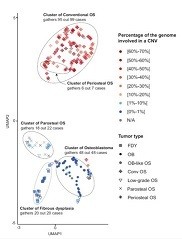 In this episode the audience will enjoy a great discussion of the growing potential of methylome and copy number profiling, a technique well established for the classification of brain tumors, in bone and soft tissue tumors diagnosis.
In this episode the audience will enjoy a great discussion of the growing potential of methylome and copy number profiling, a technique well established for the classification of brain tumors, in bone and soft tissue tumors diagnosis.
Nuclear overexpression of FOS and FOSB have emerged as a reliable surrogate markers to detect rearrangements of the transcription factors FOS and FOSB in osteoid osteoma and osteoblastoma. Limitations in specificity and sensitivity remains with some osteosarcoma showing nuclear FOS expression and a small number of osteoblastomas lacking rearrangements. Aggressive appearing osteoblastomas and osteoblastoma-like osteosarcoma can be difficult to distinguish.
The guest, Dr. Daniel Baumhoer, discusses the potential use of methylation and copy number profiling in this setting. Osteoblastomas were found to be uniformly characterized by flat copy number profiles that can add certainty to their diagnosis.
Listen in via Acast | Spotify | or Download
Associated article: Methylation and copy number profiling: emerging tools to differentiate osteoblastoma from malignant mimics?
Pink sporadic RCCs associated with TSC/MTOR alterations
 While AML and cysts are the most common renal manifestations in patients with inherited TSC syndromes, approximately 4% will develop renal cell carcinoma (RCC). These include RCC with clear cytoplasm, papillary architecture, and prominent smooth muscle stroma; RCC with granular eosinophilic cytoplasm and macrocystic architecture; and RCC resembling the eosinophilic variant of chromophobe RCC. In recent years and in five studies in the March 2022 issue of Modern Pathology, sporadic counterparts to the hereditary tuberous sclerosis complex-associated RCC that are associated with somatic TSC/MTOR pathway mutations have now been described.
While AML and cysts are the most common renal manifestations in patients with inherited TSC syndromes, approximately 4% will develop renal cell carcinoma (RCC). These include RCC with clear cytoplasm, papillary architecture, and prominent smooth muscle stroma; RCC with granular eosinophilic cytoplasm and macrocystic architecture; and RCC resembling the eosinophilic variant of chromophobe RCC. In recent years and in five studies in the March 2022 issue of Modern Pathology, sporadic counterparts to the hereditary tuberous sclerosis complex-associated RCC that are associated with somatic TSC/MTOR pathway mutations have now been described.
Listen in via Acast | Spotify | or Download
Associated article: Renal cell carcinoma associated with tuberous sclerosis complex (TSC)/mammalian target of rapamycin (MTOR) genetic alterations
Spread through airspaces (STAS) on frozens: too much, too soon
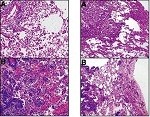 The host discusses with Dr. Sanjay Mukhopadhyay and Dr. Monisha Sudarshan from Cleveland Clinic their recent Modern Pathology editorial on the findings by F. Zhou et al. The concept of tumor spread through air spaces (STAS) has been recently introduced and is gaining momentum. On permanent sections, STAS has been associated with an increased likelihood of lymph node metastases and aggressive behavior. However, the validity of using STAS diagnosis on frozen section to guide management is controversial. The guests argue that expecting pathologists to diagnose STAS on frozen section and bear responsibility for an aggressive surgical resection is fraught with risk. In their opinion, it is too much, too soon.
The host discusses with Dr. Sanjay Mukhopadhyay and Dr. Monisha Sudarshan from Cleveland Clinic their recent Modern Pathology editorial on the findings by F. Zhou et al. The concept of tumor spread through air spaces (STAS) has been recently introduced and is gaining momentum. On permanent sections, STAS has been associated with an increased likelihood of lymph node metastases and aggressive behavior. However, the validity of using STAS diagnosis on frozen section to guide management is controversial. The guests argue that expecting pathologists to diagnose STAS on frozen section and bear responsibility for an aggressive surgical resection is fraught with risk. In their opinion, it is too much, too soon.
Listen in via Acast | Spotify | or Download
Associated article: Assessment of the feasibility of frozen sections for the detection of spread through air spaces (STAS) in pulmonary adenocarcinoma
Image-based assessment of extracellular mucin in colorectal cancer
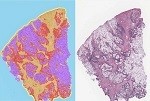 Dr. Inti Zlobec, professor of digital pathology at the Institute of Pathology in the University of Bern, discusses her team’s recent publication in Modern Pathology on the role of image analysis in assessing area of extracellular mucin and predicting consensus molecular subtypes (CMS) in colorectal carcinoma. The utilized deep learning algorithm had an excellent agreement with pathologists’ estimates of mucin areas. Coupled with MSI, mucinous area estimates may predict CMS classification using only histopathology. This highlights the great potential of Image based classifier of molecular subtypes of colon cancer.
Dr. Inti Zlobec, professor of digital pathology at the Institute of Pathology in the University of Bern, discusses her team’s recent publication in Modern Pathology on the role of image analysis in assessing area of extracellular mucin and predicting consensus molecular subtypes (CMS) in colorectal carcinoma. The utilized deep learning algorithm had an excellent agreement with pathologists’ estimates of mucin areas. Coupled with MSI, mucinous area estimates may predict CMS classification using only histopathology. This highlights the great potential of Image based classifier of molecular subtypes of colon cancer.
Listen in via Acast | Spotify | or Download
Associated article: Image-based assessment of extracellular mucin-to-tumor area predicts consensus molecular subtypes (CMS) in colorectal cancer
Meet the Expert: A Conversation with Professor Reinhard Buttner
 An informative discussion with Dr. Buttner on the significance of newly acquired genetic insights into pulmonary invasive mucinous adenocarcinoma (IMA).
An informative discussion with Dr. Buttner on the significance of newly acquired genetic insights into pulmonary invasive mucinous adenocarcinoma (IMA).
In the latest WHO classification, IMA is defined as a primary lung adenocarcinoma with tumor cells showing goblet cell- or columnar cell-morphology with abundant intracytoplasmic mucin. Due to its distinctive clinical features, i.e., peripheral location and a high frequency of multifocal, multilobular, and bilateral occurrence it has been defined as a distinct entity with dismal outcome.
Listen in via Acast | Spotify | or Download
Associated article: Genomic characteristics of invasive mucinous adenocarcinoma of the lung with multiple pulmonary sites of involvement
DP, WSI, AI, DL: The Alphabet Soup of the Third Revolution in Pathology
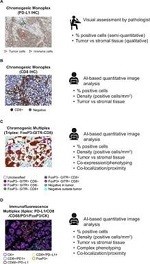 Traditional pathology have played an integral role in the delivery of diagnosis, semi-quantitative or qualitative assessment of protein expression, and classification of disease. Technological advances have recently paved the way for the development of digital pathology-based approaches for quantitative pathologic assessments, namely whole slide imaging (WSI) and artificial intelligence (AI)–based solutions, allowing us to explore and extract information beyond human visual perception.
Traditional pathology have played an integral role in the delivery of diagnosis, semi-quantitative or qualitative assessment of protein expression, and classification of disease. Technological advances have recently paved the way for the development of digital pathology-based approaches for quantitative pathologic assessments, namely whole slide imaging (WSI) and artificial intelligence (AI)–based solutions, allowing us to explore and extract information beyond human visual perception.
In this episode, two distinguished leaders in the space: Vipul Baxi, Senior Scientific Director of Digital Pathology at Bristol Meyers Squibb and Michael Montalto, Chief Scientific Officer at Path AI discuss their recent review article in Modern Pathology. The share their thoughts on the promise of Digital Pathology and the challenges and opportunities that lie ahead.
Listen in via Acast | Spotify | or Download
Associated article: Digital pathology and artificial intelligence in translational medicine and clinical practice
Atypical Uterine Polyps: A benign clinical course despite morphologic and molecular overlap with Adenosarcomas
 A subset of clinically benign uterine polyps shows atypical morphologic features worrisome for, but not diagnostic of, Mullerian adenosarcoma. The guest, Dr Marisa Nucci discusses her team’s finding in their recently published study in Modern Pathology. The authors propose the term “atypical uterine polyps” for these lesions, which show biologic overlap with early Mullerian adenosarcoma but lack molecular alterations characteristic of clinically aggressive adenosarcoma.
A subset of clinically benign uterine polyps shows atypical morphologic features worrisome for, but not diagnostic of, Mullerian adenosarcoma. The guest, Dr Marisa Nucci discusses her team’s finding in their recently published study in Modern Pathology. The authors propose the term “atypical uterine polyps” for these lesions, which show biologic overlap with early Mullerian adenosarcoma but lack molecular alterations characteristic of clinically aggressive adenosarcoma.
Listen in via Acast | Spotify | or Download
Associated article: Atypical uterine polyps show morphologic and molecular overlap with mullerian adenosarcoma but follow a benign clinical course
Breast Implant Associated Lymphomas: EBV positivity pathogenic role?
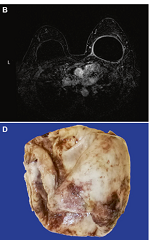 Breast implant anaplastic large cell lymphoma (ALCL) is a T-cell neoplasm arising around textured breast implants. Our host discusses with Drs. Medeiros and Miranda their recent report on eight cases of Epstein–Barr virus (EBV)-positive large B-cell lymphoma associated with breast implants. Their data suggest a pathogenetic role for breast implants (as well as EBV) in the pathogenesis of this type of implant-associated lymphomas.
Breast implant anaplastic large cell lymphoma (ALCL) is a T-cell neoplasm arising around textured breast implants. Our host discusses with Drs. Medeiros and Miranda their recent report on eight cases of Epstein–Barr virus (EBV)-positive large B-cell lymphoma associated with breast implants. Their data suggest a pathogenetic role for breast implants (as well as EBV) in the pathogenesis of this type of implant-associated lymphomas.
Listen in via Acast | Spotify | or Download
Associated article: Epstein–Barr-virus-positive large B-cell lymphoma associated with breast implants: an analysis of eight patients suggesting a possible pathogenetic relationship
Molecular subtypes of Index Vs Metachronous Gastric cancers
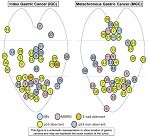 Professor Gregory Lauwers from Moffitt Cancer Center discusses his team’s recent study comparing index and metachronous gastric cancers in 42 Korean patients. Gastric adenocarcinomas were classified into 5 subtypes: EBV-associated, MMR deficient (MMRD), E cadherin aberrant, p53-aberrant [p53(+)], and p53 non-aberrant [p53(neg)]. Although no significant difference in the frequency of most molecular subtypes was found between index and metachronous lesions, the number of MMRD gastric cancers more than doubled in the latter group. Half of the metachronous cancers had a divergent molecular subtype. The later divergence could indicate a shift in the carcinogenic mechanism affecting residual mucosa possibly related to Helicobacter pylori eradication.
Professor Gregory Lauwers from Moffitt Cancer Center discusses his team’s recent study comparing index and metachronous gastric cancers in 42 Korean patients. Gastric adenocarcinomas were classified into 5 subtypes: EBV-associated, MMR deficient (MMRD), E cadherin aberrant, p53-aberrant [p53(+)], and p53 non-aberrant [p53(neg)]. Although no significant difference in the frequency of most molecular subtypes was found between index and metachronous lesions, the number of MMRD gastric cancers more than doubled in the latter group. Half of the metachronous cancers had a divergent molecular subtype. The later divergence could indicate a shift in the carcinogenic mechanism affecting residual mucosa possibly related to Helicobacter pylori eradication.
Listen in via Acast | Spotify | or Download
Associated article: Comparative molecular subtypes of index and metachronous gastric adenocarcinomas: a study of 42 Korean patients
Machine Learning facilitates assessment of shaved lumpectomy margins
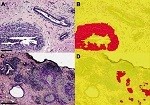 Drs. Timothy D’Alfonso, David Ho, and Lee K.Tan from Memorial Sloan Kettering in NY discuss their recent Modern Pathology study describing a new machine learning algorithm that can help pathologists assess shaved margins from lumpectomy specimens. A uniquely developed Deep Multi-Magnification Network (DMMN) was utilized in Whole Slide Images (WSI) in the hope to triage negative margins and allow pathologists to focus on shaves that are positive for DCIS and/or Invasive carcinoma.
Drs. Timothy D’Alfonso, David Ho, and Lee K.Tan from Memorial Sloan Kettering in NY discuss their recent Modern Pathology study describing a new machine learning algorithm that can help pathologists assess shaved margins from lumpectomy specimens. A uniquely developed Deep Multi-Magnification Network (DMMN) was utilized in Whole Slide Images (WSI) in the hope to triage negative margins and allow pathologists to focus on shaves that are positive for DCIS and/or Invasive carcinoma.
Listen in via Acast | Spotify | or Download
Associated article: Multi-magnification-based machine learning as an ancillary tool for the pathologic assessment of shaved margins for breast carcinoma lumpectomy specimens
Meet the Expert: A Conversation with Professor Holger Moch
 Professor Holger Moch shares with our audience his most inspiring career journey as a physician scientist and a luminary in the field of renal cancers. An enjoyable historical look back at the evolution of the field and the progress in renal tumor classifications.
Professor Holger Moch shares with our audience his most inspiring career journey as a physician scientist and a luminary in the field of renal cancers. An enjoyable historical look back at the evolution of the field and the progress in renal tumor classifications.
Listen in via Acast | Spotify | or Download
2021 Year in Review
 In this episode of ModPath CHAT, Dr. George J Netto reviews five of the highly cited manuscripts that were published in Modern Pathology in 2021.
In this episode of ModPath CHAT, Dr. George J Netto reviews five of the highly cited manuscripts that were published in Modern Pathology in 2021.
Listen in via Acast | Spotify | or Download
NTRK Fusions
 Identification of molecular alterations in NTRK 1-3 has become increasingly important with the emergence of histology-agnostic, US Food and Drug Administration-approved, effective inhibitors. The host discusses with Dr. Jaclyn Hechtman, director of clinical diagnostic development at Neogenomics, her practical insights on how testing for NTRK fusion can best be implemented and communicated within the multidisciplinary healthcare team.
Identification of molecular alterations in NTRK 1-3 has become increasingly important with the emergence of histology-agnostic, US Food and Drug Administration-approved, effective inhibitors. The host discusses with Dr. Jaclyn Hechtman, director of clinical diagnostic development at Neogenomics, her practical insights on how testing for NTRK fusion can best be implemented and communicated within the multidisciplinary healthcare team.
Listen in via Acast | Spotify | or Download
Associated article: NTRK insights: best practices for pathologists.
DICER1 Tumor Predisposition Syndrome: A chat with Pepper Dehner
 Dr. Dehner discusses his four decades journey with an entity that he first described in 1977. Since his initial description of Pleuropulmonary Blastoma (PPB), the neoplasm has become one of the defining entities of DICER1 Syndrome, a rare autosomal dominant familial tumor predisposition disorder with heterozygous DICER1 germline mutation. A fascinating historical perspective and most informative ModPath Chat episode on the wide spectrum of neoplasms that can be encountered in the syndrome awaits the listener.
Dr. Dehner discusses his four decades journey with an entity that he first described in 1977. Since his initial description of Pleuropulmonary Blastoma (PPB), the neoplasm has become one of the defining entities of DICER1 Syndrome, a rare autosomal dominant familial tumor predisposition disorder with heterozygous DICER1 germline mutation. A fascinating historical perspective and most informative ModPath Chat episode on the wide spectrum of neoplasms that can be encountered in the syndrome awaits the listener.
Listen in via Acast | Spotify | or Download
Associated article: DICER1 tumor predisposition syndrome: an evolving story initiated with the pleuropulmonary blastoma.
Re-evaluating tumors of purported specialized prostatic stromal origin: Distinct entities or Heterogenous mesenchymal neoplasms?
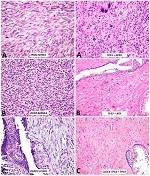 The host is joined by Dr. Andres Acosta from the Brigham and Women Hospital. Dr Acosta discusses, on behalf of a distinguished group of coauthors, their recent somewhat provocative modern pathology publication proposing that mesenchymal neoplasms of the prostate are morphologically and molecularly heterogeneous lesion that include neoplasms that harbor genetic aberrations seen in specific mesenchymal tumors arising in other anatomic sites, such as soft tissue and the uterus.
The host is joined by Dr. Andres Acosta from the Brigham and Women Hospital. Dr Acosta discusses, on behalf of a distinguished group of coauthors, their recent somewhat provocative modern pathology publication proposing that mesenchymal neoplasms of the prostate are morphologically and molecularly heterogeneous lesion that include neoplasms that harbor genetic aberrations seen in specific mesenchymal tumors arising in other anatomic sites, such as soft tissue and the uterus.
Listen in via Acast | Spotify | or Download
“AstroPath” Substituting cells for cosmic stars, the sky is the limit for digital and computational pathology!
 In this special “Meet the Expert” episode, two distinguished guests from Johns Hopkins University discuss their pioneering approach of applying methodologies, initially developed for astronomy, to the assessment of biomarkers of tumor microenvironment (TME). The guests are Dr. Janis Taube, director of Dermatopathology at Hopkins, and a co-Director of the TME Core at the Bloomberg-Kimmel Institute of Immunotherapy and Dr. Alex Szalay, Bloomberg Distinguished Professor of Astronomy and Computer Science at Hopkins and the architect for the Science Archive of the Sloan Digital Sky Survey. The fascinating discussion focuses on an innovative multiplex imaging platform that they co-developed (AstroPath) for multidimensional assessment of spatially resolved interactions at the single-cell level of lung cancer and melanoma.
In this special “Meet the Expert” episode, two distinguished guests from Johns Hopkins University discuss their pioneering approach of applying methodologies, initially developed for astronomy, to the assessment of biomarkers of tumor microenvironment (TME). The guests are Dr. Janis Taube, director of Dermatopathology at Hopkins, and a co-Director of the TME Core at the Bloomberg-Kimmel Institute of Immunotherapy and Dr. Alex Szalay, Bloomberg Distinguished Professor of Astronomy and Computer Science at Hopkins and the architect for the Science Archive of the Sloan Digital Sky Survey. The fascinating discussion focuses on an innovative multiplex imaging platform that they co-developed (AstroPath) for multidimensional assessment of spatially resolved interactions at the single-cell level of lung cancer and melanoma.
Listen in via Acast | Spotify | or Download
Counting Mitoses: SI(ze) matters!
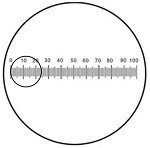 In this episode, Dr. Ian Cree, Head of The WHO Tumour Classification discusses his team's recent open access publication in Modern Pathology. Historically, mitotic figures counting has been done by expressing the number of mitoses per n high power fields (HPFs), ignoring the fact that microscope fields may differ substantially, even at the same high power (×400) magnification. Dr. Cree and coauthors remind all of this variation and its implication on the accuracy of our diagnostic and tumor grading practices. While the expanding adoption of computational digital pathology algorithm will help bring consistency to assessing proliferation activity, our MODPATH Chat guest recommends that counting should be performed per standard international unit of (mm2); with an indication of the area to be counted and the method used (“hotspot” vs “average”).
In this episode, Dr. Ian Cree, Head of The WHO Tumour Classification discusses his team's recent open access publication in Modern Pathology. Historically, mitotic figures counting has been done by expressing the number of mitoses per n high power fields (HPFs), ignoring the fact that microscope fields may differ substantially, even at the same high power (×400) magnification. Dr. Cree and coauthors remind all of this variation and its implication on the accuracy of our diagnostic and tumor grading practices. While the expanding adoption of computational digital pathology algorithm will help bring consistency to assessing proliferation activity, our MODPATH Chat guest recommends that counting should be performed per standard international unit of (mm2); with an indication of the area to be counted and the method used (“hotspot” vs “average”).
Listen in via Acast | Spotify | or Download
Associated article: Counting mitoses: SI(ze) matters!
The Role of Genotyping in the Diagnosis and Prognostication of Gestational Trophoblastic Disease
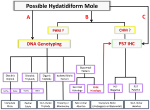 In this episode of MODPATH CHAT, our guests Dr. Natalia Buza and Dr. Pei Hui from the department of Pathology at Yale University share their approach to the application of DNA genotyping to the diagnosis and prognostication of Hydatidiform moles and Gestational trophoblastic tumors. Genotyping is now the gold standard in the confirmation and subtyping of sporadic hydatidiform moles. DNA genotyping is critical to the separation of gestational trophoblastic neoplasia from non-gestational counterparts/mimics of either germ cell or somatic origin.
In this episode of MODPATH CHAT, our guests Dr. Natalia Buza and Dr. Pei Hui from the department of Pathology at Yale University share their approach to the application of DNA genotyping to the diagnosis and prognostication of Hydatidiform moles and Gestational trophoblastic tumors. Genotyping is now the gold standard in the confirmation and subtyping of sporadic hydatidiform moles. DNA genotyping is critical to the separation of gestational trophoblastic neoplasia from non-gestational counterparts/mimics of either germ cell or somatic origin.
Listen in via Acast | Spotify | or Download
Associated article: Genotyping diagnosis of gestational trophoblastic disease: frontiers in precision medicine
Regression predicts Sentinel Lymph Node (SLN) status
 The prognostic significance of regression has long been a matter of debate. Our guest, Professor Richard Scolyer, co-director of the Melanoma Institute Australia discussed his team’s recent findings on the prognostic value of regression, and the presence of regression and/or tumor infiltrating lymphocytes (TIL) in primary cutaneous melanomas predicted sentinel lymph node (SLN) status and survival outcomes.
The prognostic significance of regression has long been a matter of debate. Our guest, Professor Richard Scolyer, co-director of the Melanoma Institute Australia discussed his team’s recent findings on the prognostic value of regression, and the presence of regression and/or tumor infiltrating lymphocytes (TIL) in primary cutaneous melanomas predicted sentinel lymph node (SLN) status and survival outcomes.
Listen in via Acast | Spotify | or Download
Associated article: Histological regression in melanoma: impact on sentinel lymph node status and survival
A Novel Prognostic Score for NSCLC following Neoadjuvant therapy
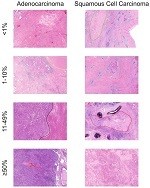 Dr. Sabina Berezowska, from the University of Lausanne Switzerland, discusses with our host her team’s recent study describing a novel “Prognostic Score” for assessing tumor regression following Neaodjuvant therapy in non-small cell lung cancer (NSCLC).
Dr. Sabina Berezowska, from the University of Lausanne Switzerland, discusses with our host her team’s recent study describing a novel “Prognostic Score” for assessing tumor regression following Neaodjuvant therapy in non-small cell lung cancer (NSCLC).
The proposed combined prognostic score (PRSC) performed better than pTNM staging and previously published Major Pathologic Response (MPR) approach.
Listen in via Acast | Spotify | or Download
Associated article: A prognostic score for non-small cell lung cancer resected after neoadjuvant therapy in comparison with the tumor-node-metastases classification and major pathological response
DDIT3 Immunohistochemical expression as a diagnostic marker for Myxoid Liposarcoma
 Dr. Jason Hornick discusses his team recent study finding that a monoclonal antibody directed against the N-terminus of DDIT3 is a highly sensitive and specific for high-grade MLPS. DDIT3 immunostains could replace molecular genetic testing in many cases, although limited labeling may be seen in a range of other tumor types.
Dr. Jason Hornick discusses his team recent study finding that a monoclonal antibody directed against the N-terminus of DDIT3 is a highly sensitive and specific for high-grade MLPS. DDIT3 immunostains could replace molecular genetic testing in many cases, although limited labeling may be seen in a range of other tumor types.
Listen in via Acast | Spotify | or Download
Associated article: Nuclear expression of DDIT3 distinguishes high-grade myxoid liposarcoma from other round cell sarcomas.
TRIM63 as a biomarker for MiT family RCC
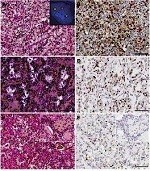 In this episode Dr. Rohit Mehra of University of Michigan discusses the utility of TRIM63 as a diagnostic marker to distinguish MiTF-RCC from other renal tumor subtypes with overlapping morphology. In combination with TFE3/TFEB FISH, TRIM63 RNA-ISH assays can improve the accuracy and efficiency of MiTF-RCC diagnosis.
In this episode Dr. Rohit Mehra of University of Michigan discusses the utility of TRIM63 as a diagnostic marker to distinguish MiTF-RCC from other renal tumor subtypes with overlapping morphology. In combination with TFE3/TFEB FISH, TRIM63 RNA-ISH assays can improve the accuracy and efficiency of MiTF-RCC diagnosis.
Listen in via Acast | Spotify | or Download
Associated article: TRIM63 is a sensitive and specific biomarker for MiT family aberration-associated renal cell carcinoma.
A MODPATH Chat with Dr. Victor Reuter: The Digital Transformation of Anatomic Pathology
 Always a visionary, Dr. Reuter was one of the earliest Anatomic Pathologists to embrace and advance the genomic and more recently the digital transformation of our field.
Always a visionary, Dr. Reuter was one of the earliest Anatomic Pathologists to embrace and advance the genomic and more recently the digital transformation of our field.
In this episode of Meet The Expert series, Dr. Reuter shares his perspective and vision on the current and future impact of digital pathology.
Listen in via Acast | Spotify | or Download
Artificial intelligence for advance requesting of IHC in diagnostically uncertain prostate biopsies
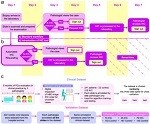 Dr. Clare Verrill and Andrea Chatrian of Oxford University in England discuss their team’s study on AI for advance ordering of IHC in difficult prostate biopsy. Their elegant work shows that an AI tool making automated IHC request prior to the pathologist read of H&E could create leaner workflow and result in pathologist time savings and shorten overall Turnaround time from accession to final diagnosis. Listen in via Acast | Spotify | or Download
Dr. Clare Verrill and Andrea Chatrian of Oxford University in England discuss their team’s study on AI for advance ordering of IHC in difficult prostate biopsy. Their elegant work shows that an AI tool making automated IHC request prior to the pathologist read of H&E could create leaner workflow and result in pathologist time savings and shorten overall Turnaround time from accession to final diagnosis. Listen in via Acast | Spotify | or Download
Associated article: Artificial intelligence for advance requesting of immunohistochemistry in diagnostically uncertain prostate biopsies.
Synchronous Endometrial and Ovarian Carcinomas: Clonal relationship and directionality of progression
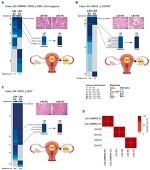 Dr. Britta Weigelt of MSKCC discusses her team’s study on synchronous endometrial (EC) and ovarian carcinomas (OC) in Lynch syndrome and constitutional Mismatch Repair Deficiency Syndrome (CMMRD). Contrary to sporadic synchronous ECs/OCs, which are almost invariably clonally related, ECs/OCs simultaneously involving the uterus and ovary in LS patients may represent two independent primary tumors. Like their sporadic counterparts, a subset of MMR deficiency syndrome-related synchronous ECs/OCs may also originate from a single with the endometrium being the likeliest site of origin. Listen in via Acast | Spotify | or Download
Dr. Britta Weigelt of MSKCC discusses her team’s study on synchronous endometrial (EC) and ovarian carcinomas (OC) in Lynch syndrome and constitutional Mismatch Repair Deficiency Syndrome (CMMRD). Contrary to sporadic synchronous ECs/OCs, which are almost invariably clonally related, ECs/OCs simultaneously involving the uterus and ovary in LS patients may represent two independent primary tumors. Like their sporadic counterparts, a subset of MMR deficiency syndrome-related synchronous ECs/OCs may also originate from a single with the endometrium being the likeliest site of origin. Listen in via Acast | Spotify | or Download
Associated article: Clonal relationship and directionality of progression of synchronous endometrial and ovarian carcinomas in patients with DNA mismatch repair-deficiency associated syndromes.
Deciphering the Molecular Underpinning of Ulcerative Colitis Associated Colorectal Cancer
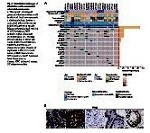 Dr. Daniela Hirsch, from the Institute of Pathology at the University of Heidelberg in Germany, discusses her findings on the molecular alterations associated with colorectal cancer in the setting of Ulcerative Colitis. Using aCGH, a 48 gene panel and MSI analysis and IHC for TP53, the author and her team revealed high rate of TP53 mutations and gains in chromosome 5p in these predominantly Microsatellite stable tumors. Phylogenic clues about ontogenesis and field effect are discerned from synchronous tumors. Listen in via Acast | Spotify | or Download
Dr. Daniela Hirsch, from the Institute of Pathology at the University of Heidelberg in Germany, discusses her findings on the molecular alterations associated with colorectal cancer in the setting of Ulcerative Colitis. Using aCGH, a 48 gene panel and MSI analysis and IHC for TP53, the author and her team revealed high rate of TP53 mutations and gains in chromosome 5p in these predominantly Microsatellite stable tumors. Phylogenic clues about ontogenesis and field effect are discerned from synchronous tumors. Listen in via Acast | Spotify | or Download
Associated article: Molecular characterization of ulcerative colitis-associated colorectal carcinomas.
Post Neo-adjuvant Chemotherapy Patterns of Residual Breast Cancer
 Dr. Stuart Schnitt from Brigham and Women Hospital in Boston discusses his team's recent findings of variable architectural and cytological patterns of residual disease in breast cancer patients with incomplete pathologic response. The relationship of pattern of residual disease to pre-treatment clinicopathologic parameters and the potential impact on management are discussed. Listen in via Acast | Spotify | or Download
Dr. Stuart Schnitt from Brigham and Women Hospital in Boston discusses his team's recent findings of variable architectural and cytological patterns of residual disease in breast cancer patients with incomplete pathologic response. The relationship of pattern of residual disease to pre-treatment clinicopathologic parameters and the potential impact on management are discussed. Listen in via Acast | Spotify | or Download
Associated article: Clinico-pathologic predictors of patterns of residual disease following neoadjuvant chemotherapy for breast cancer.
“Rebranding” Hematopathology Using Twitter: The MD Anderson Experience

Associated article: Next-Generation Scholarship: Rebranding Hematopathology Using Twitter: The MD Anderson Experience.
USCAP 2021 Long Course: Biomarkers of Response to Check Point Inhibitors - beyond PD-L1
 In this fourth and final episode of our special series covering this year’s USCAP Long Course on lung disease, our guest, Dr. Lynette Sholl, chief of pulmonary pathology at the Brigham and Women Hospital discusses her presentation on "Biomarkers of Response to Checkpoint Inhibitors". Dr. Sholl touches upon the potential role of CD8+ T cell count, Multiplex IF based spatial profiling and novel genomic determinants as markers beyond PD-L1. Listen in via Acast | Spotify | or Download
In this fourth and final episode of our special series covering this year’s USCAP Long Course on lung disease, our guest, Dr. Lynette Sholl, chief of pulmonary pathology at the Brigham and Women Hospital discusses her presentation on "Biomarkers of Response to Checkpoint Inhibitors". Dr. Sholl touches upon the potential role of CD8+ T cell count, Multiplex IF based spatial profiling and novel genomic determinants as markers beyond PD-L1. Listen in via Acast | Spotify | or Download
USCAP 2021 Long Course: Neuroendocrine Tumors of Lung, a Decade of Change!
 In this third of four special episodes highlighting the USCAP 2021 Long Course on Pulmonary Pathology, our host discusses with Dr. Natasha Rekhtman of Memorial Sloan Kettering Cancer Center (MSKCC) her presentation on Neuroendocrine tumors. Dr. Rekhtman offers her perspective on the current status of the classification of pulmonary NE tumors and the “grey zones” that remain to be tackled. Listen in via Acast | Spotify | or Download
In this third of four special episodes highlighting the USCAP 2021 Long Course on Pulmonary Pathology, our host discusses with Dr. Natasha Rekhtman of Memorial Sloan Kettering Cancer Center (MSKCC) her presentation on Neuroendocrine tumors. Dr. Rekhtman offers her perspective on the current status of the classification of pulmonary NE tumors and the “grey zones” that remain to be tackled. Listen in via Acast | Spotify | or Download
USCAP 2021 Long Course: “Pulmonary Pathology: Practical Problems and Solutions”. HP, FHP, CTILD, UIP/IFP and more!
 In this second of four special episodes highlighting the USCAP 2021 Long Course on Pulmonary Pathology, our host is joined by two distinguished faculty: Dr. Andrew Churg of the University of British Colombia and Dr. Maxwell Smith from the Mayo Clinic Arizona. The two international experts on interstitial lung disease (ILD) share their valuable perspective on “where we are and where we need to go” in our approach to the diagnosis and classification of hypersensitivity pneumonitis (HP) and usual interstitial pneumonitis (UIP). Listen in via Acast | Spotify | or Download
In this second of four special episodes highlighting the USCAP 2021 Long Course on Pulmonary Pathology, our host is joined by two distinguished faculty: Dr. Andrew Churg of the University of British Colombia and Dr. Maxwell Smith from the Mayo Clinic Arizona. The two international experts on interstitial lung disease (ILD) share their valuable perspective on “where we are and where we need to go” in our approach to the diagnosis and classification of hypersensitivity pneumonitis (HP) and usual interstitial pneumonitis (UIP). Listen in via Acast | Spotify | or Download
USCAP 2021 Long Course: "Pulmonary Pathology: Practical Problems and Solutions”. Meet the Directors!
 In this special episode, Dr. Sanja Dacic and Dr. Mary Beth Beasley highlight the topics of the upcoming Long Course on Pulmonary Pathology, that will air on March 13th during the USCAP 2021 annual meeting. As international experts and thought leaders on thoracic tumors, they have been heavily involved with developing guidelines for molecular biomarkers of mesotheliomas and Lung cancers. Tremendous advances have taken place in pulmonary pathology. The guests discuss their take on these exciting advancements and share their future vision. Listen in via Acast | Spotify | or Download
In this special episode, Dr. Sanja Dacic and Dr. Mary Beth Beasley highlight the topics of the upcoming Long Course on Pulmonary Pathology, that will air on March 13th during the USCAP 2021 annual meeting. As international experts and thought leaders on thoracic tumors, they have been heavily involved with developing guidelines for molecular biomarkers of mesotheliomas and Lung cancers. Tremendous advances have taken place in pulmonary pathology. The guests discuss their take on these exciting advancements and share their future vision. Listen in via Acast | Spotify | or Download
 MHC class I loss in endometrial carcinoma
MHC class I loss in endometrial carcinoma
MHC class I loss by tumor cells decreases tumor neoantigen presentation to the immune system and therefore represents a possible mechanism of immunotherapeutic resistance in cancers that otherwise could be good candidates for checkpoint inhibition (e.g. mismatch repair (MMR)-deficient and PD-L1-positive tumors). In this episode our guest, Dr. Anne Mills discusses her recent Modern Pathology publication on loss of MHC class 1 expression in some endometrial cancers. Listen in via Acast | Spotify | or Download
Associated article: MHC class I loss in endometrial carcinoma: a potential resistance mechanism to immune checkpoint inhibition.
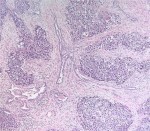 Predictors of metastases in non-seminomatous TGCT: The rationale for evolution of the pathologic staging system?
Predictors of metastases in non-seminomatous TGCT: The rationale for evolution of the pathologic staging system?
Pathological risk factors for metastatic disease in patients with testicular non-seminomatous germ cell tumors are debated. The tumor-node-metastasis (TNM) classification eighth edition for testicular cancers includes divergent versions, by the International Union Against Cancer (UICC) and by the American Joint Committee for Cancer (AJCC). In this episode we discuss with Dr. Daniel Berney his recent study on the topic. Listen in via Acast | Spotify | or Download
Associated article: Pathological predictors of metastatic disease in testicular non-seminomatous germ cell tumors: which tumor-node-metastasis staging system?
 Composite Nuclear Grading System to Predict Survival in Epithelioid Peritoneal Mesothelioma
Composite Nuclear Grading System to Predict Survival in Epithelioid Peritoneal Mesothelioma
This episode’s guest, Dr. David Chapel, was the recipient of the 2020 USCAP Stephen Vogel Award for his research as a trainee in the University of Chicago! Here, he discusses his recent report on a multi-institutional cohort of 225 malignant peritoneal mesotheliomas, assessed for 21 clinical, morphologic, and immunohistochemical potential prognostic parameters. The exemplary study, published in Modern Pathology, clarifies the complex interaction of clinical and pathologic features in peritoneal mesothelioma and validates the prognostic significance of a standardized nuclear grading system. Listen in via Acast | Spotify | or Download
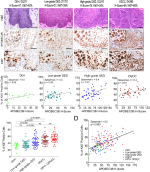 APOBEC, the enemy within us!
APOBEC, the enemy within us!
APOBEC3B (A3B) is a newly recognized endogenous source of mutations in a range of human cancers by inflicting C-to-T or C-to-G base substitutions in 5′-TCA/T trinucleotide motifs. In this episode, Drs. Harris and Argyris discuss the impact of their recent findings on the role of APOBEC3A in Head and Neck Squamous Cancer. Listen in via Acast | Spotify | or Download
Associated article: Endogenous APOBEC3B overexpression characterizes HPV-positive and HPV-negative oral epithelial dysplasias and head and neck cancers
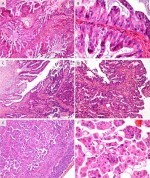 Serous Carcinoma of The Uterine Cervix: A Vanishing Entity
Serous Carcinoma of The Uterine Cervix: A Vanishing Entity
The Host discusses with Dr. Philip IP (Li Ka Shing Faculty of Medicine, University of Hong Kong) his recent study re-assessing Cervical adenocarcinoma with Serous-Like morphology in light of the recent changes in the Classification of cervical adenocarcinomas. Listen in via Acast | Spotify | or Download
Associated article: Cervical carcinomas with serous-like papillary and micropapillary components: illustrating the heterogeneity of primary cervical carcinomas.
 Top 20 of 2020, The Year in Review
Top 20 of 2020, The Year in Review
Dr. Netto reflects on the topics of the most cited manuscripts published in Modern Pathology in 2020, with a brief discussion of five selected studies involving COVID-19, DICER1, NTRK, Precursor lesions of HPV-Independent Vulvar Squamous Cell Carcinoma and Applications of Computational Pathology and Artificial Intelligence in Pathology. Listen in via Acast | Spotify | or Download
You can browse through the full list of our Top 20 of 2020 papers in this Collection.
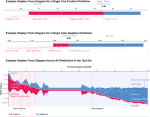 Machine Learning-Based Algorithm to Predict Death from COVID-19
Machine Learning-Based Algorithm to Predict Death from COVID-19
Dr. Netto discusses with his two guests, Dr. Peter MCaffrey from the UTMB in Galveston and Dr. Adam Booth, their publication on developing a machine learning model using 5 serum chemistry laboratory parameters for the prediction of death from COVID-19. The discussion is followed by a conversation on the exciting role of AI and social media in Pathology given the unique expertise of the guests. Listen in via Acast | Spotify | or Download
Associated article: Development of a prognostic model for mortality in COVID-19 infection using machine learning
 Kinase Fusion Related Thyroid Cancers
Kinase Fusion Related Thyroid Cancers
Dr. Peter Sadow , Director of Head and Neck Pathology at MGH discusses with Modern Pathology Editor Dr. George Netto his recent work defining morphologic correlates of the expanding list of Kinase Fusions driving thyroid cancers. A triage testing algorithm and therapeutic implications are highlighted in the discussion. Study by Chu et al, Clinicopathologic features of kinase fusion-related thyroid carcinomas: an integrative analysis with molecular characterization. Listen in via Acast | Spotify | or Download
Associated article: Clinicopathologic features of kinase fusion-related thyroid carcinomas: an integrative analysis with molecular characterization
 Pancreatic Cancer Genetics 2020
Pancreatic Cancer Genetics 2020
The recent publication of the “Pan-Cancer Atlas” by the Pan-Cancer Analysis of Whole Genomes Consortium provided a great opportunity for Dr. Ralph Hruban and his team to reflect on where we stand in our understanding of the genetics of pancreatic cancer. From germline variants that predispose to the development of the disease, to somatic mutations that are therapeutically targetable, genetics is now providing hope, where there once was no hope, for those diagnosed with pancreatic cancer. Listen in via Acast | Spotify | or Download
Associated article: The genetics of ductal adenocarcinoma of the pancreas in the year 2020: dramatic progress, but far to go
ALK rearranged renal cell carcinoma (ALK-RCC)
 The host discusses with Professor Ondrej Hes, from the Charles University in the Czech Republic, his recent multi-institutional study that further defines ALK-RCC as a genetically distinct renal cancer type showing a heterogeneous histomorphology. The authors advocate a routine ALK IHC screening for “unclassifiable RCCs” with heterogeneous features. Listen in via Acast | Spotify | or Download
The host discusses with Professor Ondrej Hes, from the Charles University in the Czech Republic, his recent multi-institutional study that further defines ALK-RCC as a genetically distinct renal cancer type showing a heterogeneous histomorphology. The authors advocate a routine ALK IHC screening for “unclassifiable RCCs” with heterogeneous features. Listen in via Acast | Spotify | or Download
Associated article: ALK rearranged renal cell carcinoma (ALK-RCC): a multi-institutional study of twelve cases with identification of novel partner genes CLIP1, KIF5B and KIAA1217
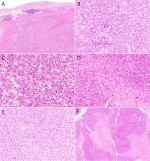 Xanthogranulomatous epithelial tumor
Xanthogranulomatous epithelial tumor
Dr Netto discusses with Dr. Andrew Folpe a novel tumor of soft tissue and bone with a predilection for young females. The newly discovered lesion is provisionally termed “xanthogranulomatous epithelial tumor”. Clues to the diagnosis of this tumor type are presented by Dr. Folpe with a practical guide to navigating the challenging differential diagnosis of epithelial expression in mesenchymal neoplasms. Listen in via Acast | Spotify | or Download
Associated article: Xanthogranulomatous epithelial tumor: report of 6 cases of a novel, potentially deceptive lesion with a predilection for young women
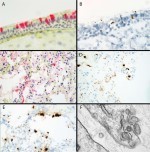 COVID-19 pulmonary pathology in cross Atlantic pandemic epicenters
COVID-19 pulmonary pathology in cross Atlantic pandemic epicenters
A discussion with Dr. Borczuk of New York Presbyterian Hospital- Weill Cornell Medicine on his team findings in sixty eight COVID-19 autopsies, performed early on during the pandemic, at 3 institutions in heavily hit areas (2 USA, 1 Italy). While a heterogeneous disease, COVID-19 pneumonia displayed consistent features in all three centers. Listen in via Acast | Spotify | or Download
Associated article: COVID-19 pulmonary pathology: a multi-institutional autopsy cohort from Italy and New York City
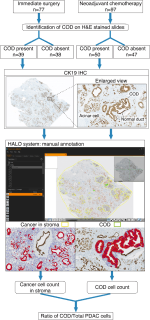 Quantitative assessment of residual pancreatic intraductal carcinoma following neoadjuvant chemotherapy
Quantitative assessment of residual pancreatic intraductal carcinoma following neoadjuvant chemotherapy
Modern Pathology Editor in Chief discusses with Laura Wood MD PhD her recent study on quantitative assessment of residual pancreatic intraductal carcinoma following neoadjuvant chemotherapy. The implications of finding that the intraductal component of pancreatic cancer is more resistant to chemotherapy are highlighted. Listen in via Acast | Spotify | or Download
Associated article: Intraductal pancreatic cancer is less responsive than cancer in the stroma to neoadjuvant chemotherapy
 A novel tumor type with EWSR-CREB fusions blending features of Angiomatoid FH and Mesothelioma
A novel tumor type with EWSR-CREB fusions blending features of Angiomatoid FH and Mesothelioma
A novel tumor type with EWSR-CREB fusions blending features of Angiomatoid FH and Mesothelioma; a discussion with the author Pedram Argani. Listen in via Acast | Spotify | or Download
Associated article: EWSR1/FUS–CREB fusions define a distinctive malignant epithelioid neoplasm with predilection for mesothelial-lined cavities
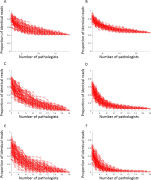 Using “ONEST” algorithm to improve reproducibility of PD-L1 assessment by pathologists
Using “ONEST” algorithm to improve reproducibility of PD-L1 assessment by pathologists
A conversation with David Rimm, the author of a recent study on Triple negative breast cancer, on using a novel statistical algorithm (ONEST) to improve reproducibility of PD-L1 assessment by pathologists. Listen in via Acast | Spotify | or Download
Associated article: Prospective multi-institutional evaluation of pathologist assessment of PD-L1 assays for patient selection in triple negative breast cancer
